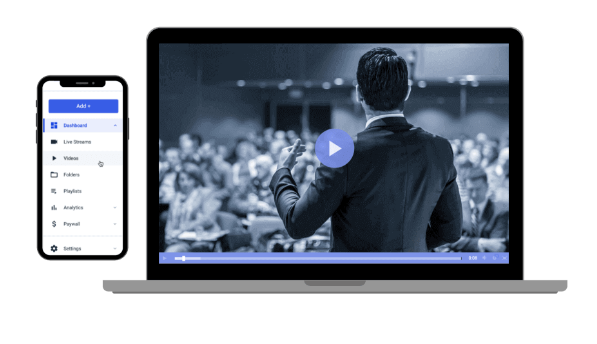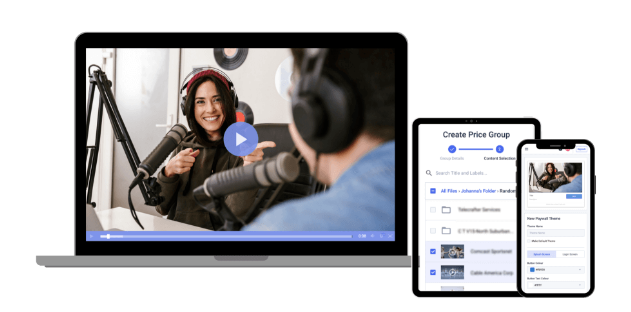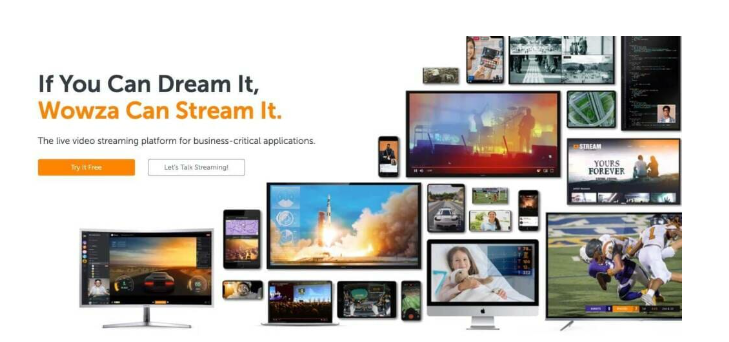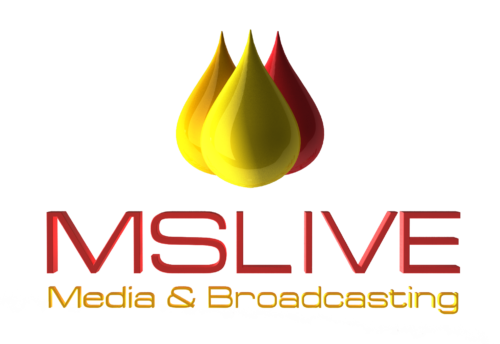
- April 27, 2023
- mslivestream333
- 0 Comments
- 819 Views
- 0 Likes
- Livestreaming
Webcasting Hyderabad – live streaming Chennai
Streaming video online has become a key part of many brands’ business models, and how brands utilize video content has evolved.
Choosing between a live streaming model for your video content and an on-demand model doesn’t have to be mutually exclusive. With the right streaming platform, you can share your videos both ways and successfully monetize your views.
Let’s look at the differences and similarities between live streaming and video on demand, how to find the right unified streaming solution to meet your needs, and explore some of the more popular unified live streaming and VOD platforms available on the market today.
What is Live Streaming?

Live streaming allows your viewers to see content as it’s produced, making them feel as if they’re part of an exclusive club.
Live streaming is just what the name suggests: your viewers in real-time as it’s being created. With live streaming, there is typically very little lag time between filming and viewing.
Live-streamed content is minimally edited, as it goes straight from the camera you’re using to film and to the viewers. There is a great appeal to live streaming for viewers who can feel as if they’re part of an exclusive club who watch content as it’s being created, and the live streaming industry is growing rapidly.
A 2016 Research and Markets report projected the video live streaming market to grow from $30.29 billion in 2016 to $70.05 billion by 2021, accentuating the format’s popularity with consumers.
Streaming live video content isn’t ideal for every industry, however, as some businesses may not create the type of valuable content necessary to engage and inform their viewers with the more off-the-cuff production style required by live streaming.
Benefits of Live Streaming for Businesses
Electing to share your content in a live streaming model holds some important benefits for businesses, including:
- Real-time experience: Users love feeling as if they’re part of something special and unique when interacting with brands. By live streaming your content, you allow users to opt into a one-time experience shared only by those other viewers watching your content live. This can build a sense of belonging and connection with your brand that users may not otherwise feel.
- Interaction: Live streaming allows you to engage with your users, and vice versa, in real-time. During a live stream, you can take polls, answer questions, and get viewers involved in the content, giving them more ownership of the final content product and, again, a greater feeling of connection with your business.
- Cost reduction: For some businesses, live streams can be a more cost-effective way to get information out to users or even employees all at once, such as in the case of training programs. Rather than setting up a central time and place to host training for groups of employees, where things such as travel, conference space, meals, and security must be considered, live streaming allows everyone to access the same information at once without all the added costs.
- More hype: Promoting a live streaming event builds excitement and buzz about your business, getting people to engage with your brand who may not have otherwise watched your content. This buzz can help you open up new markets, engage new customers, and even encourage the free promotion of your content as attendees share their experiences with their own followers.
Live streaming creates a real-time experience, allows for interaction, creates hype, and can be more cost-effective when comparing streaming vs VOD.
What is VOD?
Video on Demand (VOD) can be useful for businesses and organizations of any type to host videos online.
On the opposite end of the video content-sharing spectrum is video on demand, or VOD for short. Rather than sharing your content with your viewers straight from the camera as it’s being created, VOD allows them to access your videos whenever, wherever they want to watch them.
Because VOD content is pre-recorded, it can be more heavily edited and produced than live-streamed content, sometimes giving off a more professional, polished feel. For some brands, this ability to project a clean, cohesive image is essential and as a result, they elect only to utilize VOD platforms for their business needs.
Your brand can utilize live streaming content in a VOD model, however, if you record your live stream and later upload it for consumers to access on their own terms. This ability can open up greater exposure and wider viewership of your videos, improving brand recognition and consumer buy-in.
It doesn’t always have to be about live streaming vs VOD, as you can turn live streams into VOD content, allowing these two video strategies to work together seamlessly.
Benefits of VOD Streaming for Businesses
There are a wide variety of benefits to using VOD streaming for your business content, including:
- Connectivity: Modern technology allows your content to always be available to your users whenever they want to watch it and on whatever device they have at hand. This gives you a greater opportunity to have your videos seen, and you can even promote videos that are years old to get new views.
- Polished final product: Pre-recorded content can be edited, re-recorded, and perfected before any of your viewers ever see it. This allows you to put out the best representation of your brand and your content as possible, maintaining your brand’s image in the public eye.
- Widely adaptable: For industries where live streaming isn’t mandatory, VOD can be highly beneficial in providing consumers access to content. You have more control over what your viewers see, and they can view your content on their own schedules.
When it comes to video on demand vs streaming, there are some distinct advantages that come with using video on demand, such as a more polished final product, wide adaptability, and increased connectivity and access.
Live Streaming vs. VOD
While live streaming and VOD are both methods of online video delivery, you cannot have live to VOD streaming without first recording live content.
VOD is, at its core, a method for viewing pre-recorded video content. You can — and should, for maximum video monetization opportunities — record live streaming content for later access on a VOD solution. Recording your content for later use with VOD distribution allows you to maximize your reach and more completely monetize your content. It shouldn’t be about streaming vs VOD, you should use both video methods.
While you can choose to leverage both live streaming and VOD content for your business, that you select streaming platform that can capably handle both distribution methods. Having a unified platform allows you to save time, money, and frustration in dealing with multiple distribution methods, making your job easier in the long run.
6 Features to Look for in a Unified Platform
When selecting a video distribution solution that can handle both live streaming and VOD, there are six key features to look for, including:
- HTML5 video player
- Automatic transcoding
- Adaptive bitrate streaming
- Global video delivery
- Monetization and advertising
- Security and access control
These six features provide you and your users with the most seamless, highest-quality video viewing experience regardless of whether they’re watching your content live or pre-recorded.
1. HTML5 Video Player
There is a multitude of options available when it comes to using a compatible and secure HTML5 video player.
Some older video streaming platforms have integrated players that only are compatible with certain browsers, meaning the video isn’t playable if a user isn’t using a supported browser.
With an HTML5 video player, however, your viewers can use any popular web browser they choose and still get a great video playback experience. HTML5 video players are compatible with mobile devices as well, giving consumers broad access to content.
Having a video player that’s compatible with the widest range of web browsers is important to a great user experience, as your viewers won’t get frustrated by having to download a new browser just to play your videos.
2. Automatic Transcoding
One file size does not fit all, especially when one of your viewers wants to use their desktop browser and another wants to use their smartphone.
Creating each individual file size that is necessary to play on the wide range of devices and browsers available today is incredibly labor-intensive, and is not a task suitable for someone without significant technical knowledge.
With automatic transcoding, however, simply create one group of settings for each video file you upload, and the video transcoder does the rest for you. It then serves up the file size that’s most compatible with whatever player an individual viewer is using, giving them the highest-quality video file that will play with the least amount of buffering.
3. Monetization & Advertising

All three monetization methods — AVOD, SVOD, and TVOD — offer their own benefits and drawbacks for businesses.
Effortless video monetization is important in helping you preserve your business’s revenue while also putting out great streaming video content.
With the right unified video streaming service, you can quickly and easily set up your videos to make money in one of three ways: AVOD, SVOD, and TVOD.
Ad-Based Video on Demand (AVOD)
AVOD monetization is among the most familiar and oldest monetization methods. This is the same model that traditional broadcast television uses, or that streaming giant YouTube uses.
Your video content is free for all your users to access, but you make money by showing advertisements before, during, and after your videos. These ads can be targeted to your users’ individual browser history and preferences, and the better you know your target market, the better you can solicit potential advertisers.
AVOD content is preferred by users who do not like to pay to access content, as they would rather sit through some advertisements than managing another subscription fee or pay piece-by-piece for video content.
This model provides one of the least predictable revenue sources for businesses, however, as the amount of money you make is determined by how many people view your videos. If you do have content that goes viral, however, your revenues can skyrocket with all the added views, something other monetization models do not offer.
Subscription Video on Demand (SVOD)
With the subscription-based monetization model, your money is made by getting your users to pay you monthly or annually to access your content. For one price, they are then given access to all your available videos, and they can watch as much or as little content as they want.
Education-based subscription services such as the Great Courses Plus and Coursera operate under this model, charging monthly fees for access to the platform’s entire content library.
Many users prefer to use platforms that offer SVOD monetization, as they pay one price for all the ad-free content they want to consume. This model also provides a much more predictable, stable source of income for businesses, but that revenue is highly dependent on you creating fresh, new content to keep your subscribers engaged enough to keep paying for the service.
Transactional Video on Demand (TVOD)
TVOD falls somewhere between AVOD and SVOD, as users pay for individual pieces of content or sets of content on a pay-per-view basis. This model does not make your content completely free like AVOD does, but users also don’t pay one subscription fee to access everything you produce.
This model works well for businesses that offer high-demand, premium pieces of content, such as popular sporting events or movies. Depending on the type of content, users may access a pay-per-view platform to view content once, such as with a live-streamed concert or sporting event or a movie rental, or they may use a video paywall for the privilege of downloading that piece of content for repeated viewing.
While TVOD can work well for some industries, it often works best for those brands that routinely produce big, one-time events or offer content that is highly anticipated and well-publicized.
With live streaming vs VOD, you can use all three monetization methods for both types of videos. You can offer AVOD, SVOD, and TVOD for both video methods.
Comparing the 10 Top Platforms for Live Streaming & VOD
While there are a large number of streaming platforms that handle either live streaming or VOD, there are very few that handle both options.
Let’s review 10 of the top unified platforms. Each platform has its benefits and drawbacks, with some being better for specific use cases than others.
1. Mslive
Mslive’s online video platform combines transcoding, monetization, security, and content management features for a professional live streaming experience.
Mslive is one of the most intuitive video hosting solutions that offer both live streaming and VOD. The video streaming platform includes a wide variety of professional video hosting features to make it easy to upload, stream, and share content across several platforms.
Mslive provides comprehensive live streaming and secure video hosting services. Users can embed videos on their own websites while maintaining 100% control of their content. Among other features, Mslive offers an integrated paywall, password protection, referrer restriction, and an analytics dashboard.
Mslive distinguishes itself by offering high-end features with competitive pricing plans. These include ad-free broadcasting, white-label service on all plans, and top-tier CDN delivery. 24/7 phone support is also available for premium and enterprise-grade plans.
2. Wowza

Wowza’s cloud streaming platform features a live streaming engine for business-critical applications.
Wowza is a well-established open-source streaming solution, and it offers both live streaming and VOD hosting. The company provides a variety of packages at different price points.
Wowza offers two main products, the first of which is the Wowza Streaming Engine. This product is widely used in the industry for self-hosted streaming. Wowza video streaming services, however, come with the Wowza Streaming Cloud offering. The Streaming Cloud functionality includes a variety of features aimed at providing low-latency content access to global audiences of all sizes.
Wowza live streaming platform’s core capabilities help developers, event producers, and entrepreneurs deliver live streams to their viewers. This is all made possible through third-party integrations, captioning, API, and more.
In addition to its variety of offerings and features, Wowza is particularly well known for its reliable security.
Conclusion
For many brands, it isn’t a matter of choosing between live streaming and VOD. Instead, they know they need a combination of the two models to give their audiences the best access to the content they create. Finding a platform that integrates both options seamlessly is key to giving users the best experience and saving you time, money, and frustration.
Unified business hosting and streaming solutions such as Mslive offer the best of both worlds without having to utilize two separate platforms for distribution.


Leave a Comment